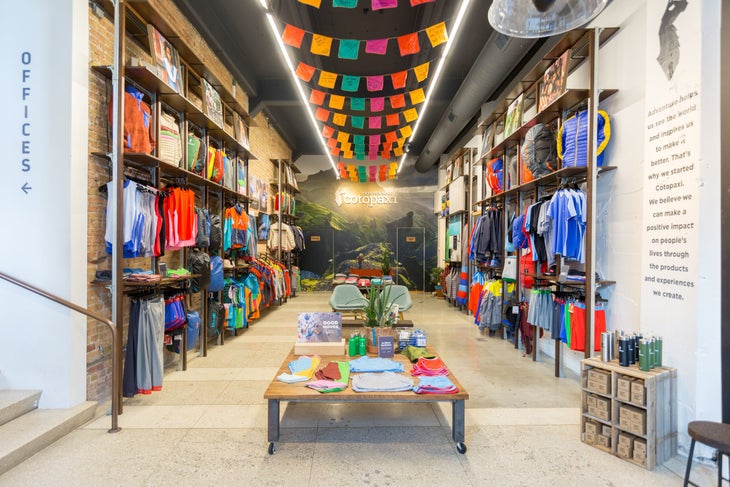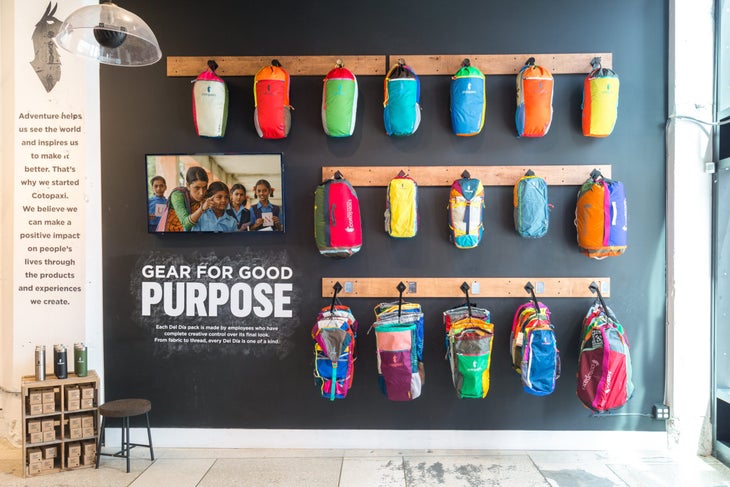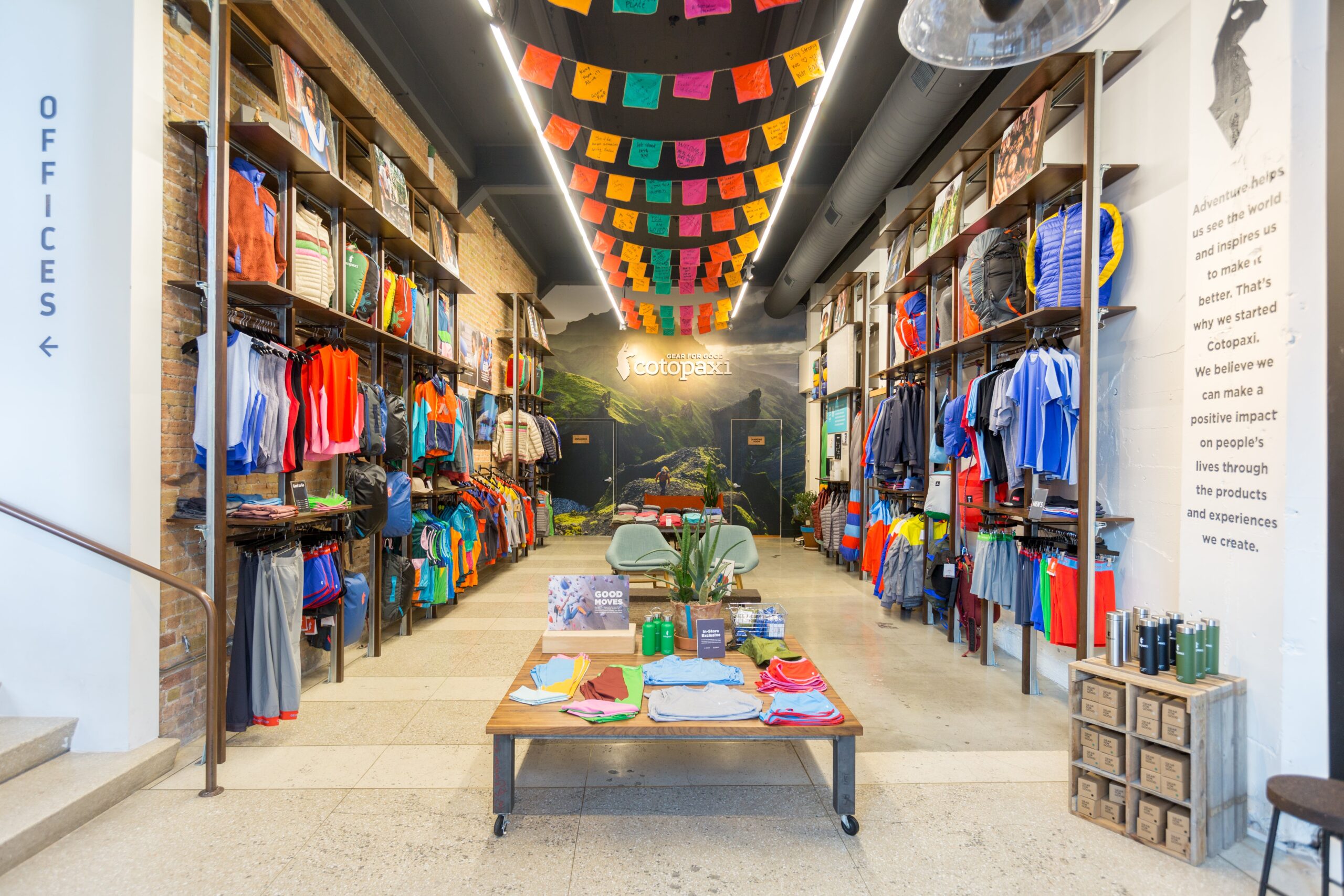Successfully producing outdoor gear used to be such a simple endeavor: make great product, then sell it through retail partners, or directly through a catalog or your own store. These days, the formula has become a lot more complicated. With the option to distribute through a suite of channels—specialty retailers, big-box retailers, directly to consumers via ecommerce and/or your own storefronts, through Amazon’s Vendor Central or Amazon resellers—brands must pull off a delicate balancing act and juggle a network of relationships to get their gear into customers’ hands. The good news? This swirl of channels also presents an opportunity to reach consumers wherever they are, telling a vibrant brand story while enhancing the shopping experience like never before. Over the next few weeks, OBJ will take a closer look at best practices for vendors in an increasingly omni-channel world.

The Challenge: Appreciate the Power of Retail
At first glance, it sounds like a great strategy: cut back on wholesale to focus on selling directly to your customers, thereby controlling your brand message, gathering instant feedback, and maximizing your margins.
But is it?
Building a DTC business can be a profitable endeavor—as long as it doesn’t mean abandoning years of customer goodwill and relationships with retail partners, stresses Mike Massey, founder of Locally and owner of Massey’s Outfitters. “Wholesale business has developed the reason customers go to a [brand’s] website in the first place,” he said. “It’s very difficult to stand up a brand purely online without any access to in-store marketing.”
One major reason: many customers are first introduced to a brand through their local gear shop. And winning the approval of a trusted specialty retailer and its employees helps customers feel more comfortable about spending money, especially on big-ticket items like ultralight tents, skis, and kayaks. “The retailer can serve as a powerful third-party endorsement,” said Kristin Carpenter-Ogden, founder of Verde Brand Communications and host of its Channel Mastery podcast. “It brings authenticity to a major purchase.”
Local gear shops are masters of word-of-mouth marketing, Massey added—when a retailer loves a particular brand or product, it spreads through the outdoor community. More ominously, when a vendor abruptly disappears from the shop’s shelves, customers will hear about that, too.
The emotional connection shoppers feel to their community retailers is backed up with data, Carpenter-Ogden pointed out. “There’s qualitative research that shows that when a brand decreases their presence in a region, their direct sales drop off their website,” she said, citing data gathered by the omni-channel software company, ShipEarly. Those shoppers aren’t simply declining to buy from that one brand, either: “That customer is going to find a solution in another brand they can touch and feel.”
So vendors that turn their backs on the wholesale channel risk severing critical connections with their consumers and losing sales to competitors. What’s worse, argues Rich Hill, president of Grassroots Outdoor Alliance, is that the perceived benefits of selling direct aren’t even as good as they seem. “There’s this fallacy out there about the additional margin in the DTC model,” he said. “The truth is, the costs associated with that model are dramatically higher,” due to the difficulty of attracting and maintaining a loyal customer base.
In fact, Hill said, “When you look at [some] DTC-only businesses, the only reason they’re growing is they’re roasting investor dollars” rather than maintaining a sustainable, standalone business. Other brands with both DTC and wholesale channels resort to aggressive discounting to attract shoppers to their websites, undercutting their own retailers. “They’re trading full-price business for off-price business, and that’s going to come back and bite them in the ass,” predicted Hill.
The Fix
Build a strategy that recognizes the importance of the brick-and-mortar shopping experience to consumers, plus the marketing and customer acquisition benefits of specialty retailer partners. This requires a shift to long-term, business-building thinking versus a shorter-term, purely margins-based approach.
The Strategy
Direct ecommerce and wholesale can work together to build overall business when vendors resist the temptation to do it alone.
>> Crunch the numbers.��It’s crucial to consider all the costs associated with DTC business, not just sales margins, when making plans. “In order to be competitive in that [direct] space, it gets super-expensive, and cost per click is super-high. You have to throw a lot of money at it,” said Hill.
>> Consider your customers.��Where do most shoppers choose to spend their money? Probably in stores (only 10 percent of overall retail sales are through ecommerce, according to ). Massey cites one footwear brand that realized 90 percent of its sales were through retailers, but 90 percent of its marketing budget was trying to push people to its website. “Now they’re evolving and making the company responsive to the customer’s journey,” he said.
>> Try strategic stocking.�� (see below) offers only carefully selected SKUs through wholesale—products they think most easily communicate the brand’s story to new customers. “With one of our bags, the , you immediately see every bag is different,” said . “Customers learn the bags are designed by the sewers using remnant materials. The product itself creates a story for the consumer.”

Case Study: Cotopaxi Branches Out
Cotopaxi launched in 2014 as a digitally native brand, and founders Davis Smith (also CEO) and Stephan Jacob (also president and COO) intended to keep it that way. “But we recognized as the brand grew that retailers can truly be amazing partners,” Jacob said. “There’s value and place for physical retail. If you look at the percent of transactions and purchase behavior, people still want to experience a brand in a real-life environment.” So Cotopaxi made the leap into wholesale, starting with an REI partnership at the end of 2017. The brand is now expanding into carefully vetted specialty retailers.
Customer acquisition is an important factor in the shift, Smith and Jacob acknowledged. “One of the challenges for a digital brand is reach—how do you get in front of the customers?” Smith said. “You’re driving traffic to your site, hopefully in an organic way, but certainly through paid efforts.” And when it comes to growing the business in particular markets, “It’s not going to be cost-effective to get yourself in front of every person in that market online. That’s where we’re able to leverage retail partners.”
And while jumping into wholesale means losing some control over brand messaging, Cotopaxi plans to help retail employees communicate their socially conscious ethos through training sessions. “That’s key, having your partners excited and able to tell your brand’s story,” Davis said.


